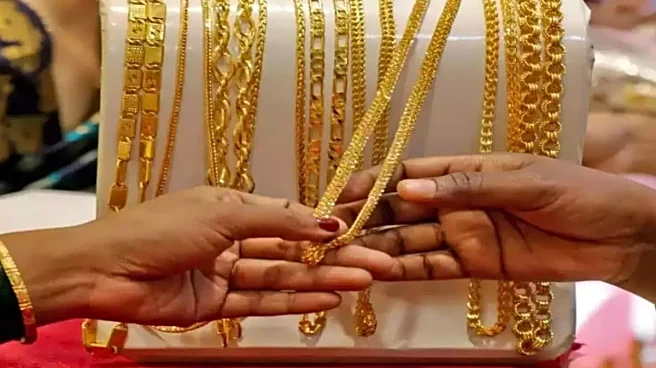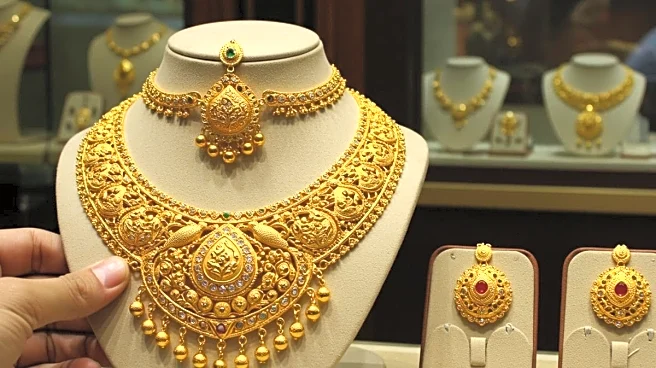For generations, gold has been the star of Indian households – hoarded in lockers, worn during weddings, and treasured as insurance in times of crisis. But as silver prices surge globally, the white metal
is now challenging gold’s long-held dominance.
Experts suggest that silver could outperform gold in the next two to three years, with international prices expected to touch 70–72 dollars an ounce and domestic rates crossing Rs 2 lakh per kilogram.
The rally has been spectacular. On September 25, 2025, silver crossed 45 dollars for the first time in 14 years. In India, December MCX contracts jumped 2 percent to Rs 1,36,700, continuing a six-week streak of gains. For investors watching both gold and equity markets, the question has become sharper: should silver now be treated as seriously as gold?
Gold as a Lifeline
Gold’s emotional pull in India is undeniable. It is not just a commodity but a cultural and financial anchor. In 1991, when India’s foreign exchange reserves were dangerously low, the country had to mortgage gold to secure survival.
During the 2020 pandemic, gold once again proved its worth as investors rushed toward safety. Central banks across the world still hold massive reserves, underlining gold’s status as a long-term store of value.
Returns back this perception. Over three decades, gold has offered a steady cushion, delivering 7.6 percent annual returns in USD, which rose to 11 percent in India once the rupee’s depreciation was factored in. Gold’s track record gives investors confidence in uncertain times.
Silver’s Industrial Edge
Silver’s story is different. Its price is no longer driven solely by sentiment or jewellery demand but by industries at the heart of global transformation. Silver is essential for electric vehicles, solar panels, semiconductor chips, and even 5G networks. Each EV requires roughly double the silver of a conventional car, tying the metal’s future to the pace of clean energy adoption.
This industrial demand has injected fresh momentum into silver markets. Over the past year, silver has outperformed gold, giving 48% returns compared to gold’s 43%, both leaving equities far behind. For many analysts, this practical utility makes silver not just a speculative buy but a metal of the future.
Correlation and Diversification
For investors, the relationship between gold, silver, and equity is crucial. Gold and silver move together closely, with a correlation of 0.749, which means holding both doesn’t provide much diversification.
However, silver shows a mild negative correlation with the Nifty, making it a better hedge against equity downturns. Gold, on the other hand, remains virtually uncorrelated with stocks, cementing its role as a safe-haven asset.
Currency swings add another layer. India imports almost all of its gold and silver, paying in dollars. This means the rupee’s weakness often boosts returns in rupee terms. Silver, which returned 6.4% in USD over 30 years, delivered nearly 10 percent domestically.
The Buying Puzzle
Investors today face multiple choices. Exchange-traded funds (ETFs) offer liquidity but carry brokerage and annual charges. Digital platforms make buying easy but come with GST and storage fees. Mutual funds spread risk but charge higher expenses. Physical metal offers tangible security but attracts GST, making charges, and locker costs.
For silver, these trade-offs mirror gold, with the added challenge of storage. Physical silver, being bulkier, is harder to hold than gold. For most investors, ETFs and digital silver have emerged as more convenient routes.
Despite silver’s stunning run, experts warn against chasing momentum blindly. A 50% surge in prices in a short time increases the risk of corrections. Gold, meanwhile, continues to shine in its traditional role: the lifeline during crises. Silver’s appeal rests on future industrial growth, which makes it promising but also volatile.
The consensus is clear: treat silver as a complement, not a replacement for gold. A balanced portfolio should blend both metals, gold for stability, silver for growth. The two together capture tradition and technology, past and future, offering investors a way to ride both safety and opportunity.



/images/ppid_59c68470-image-175931007773246516.webp)

/images/ppid_59c68470-image-175915004269463825.webp)
/images/ppid_59c68470-image-175921003436586365.webp)
/images/ppid_59c68470-image-175912260625933820.webp)




/images/ppid_59c68470-image-175920757005380166.webp)